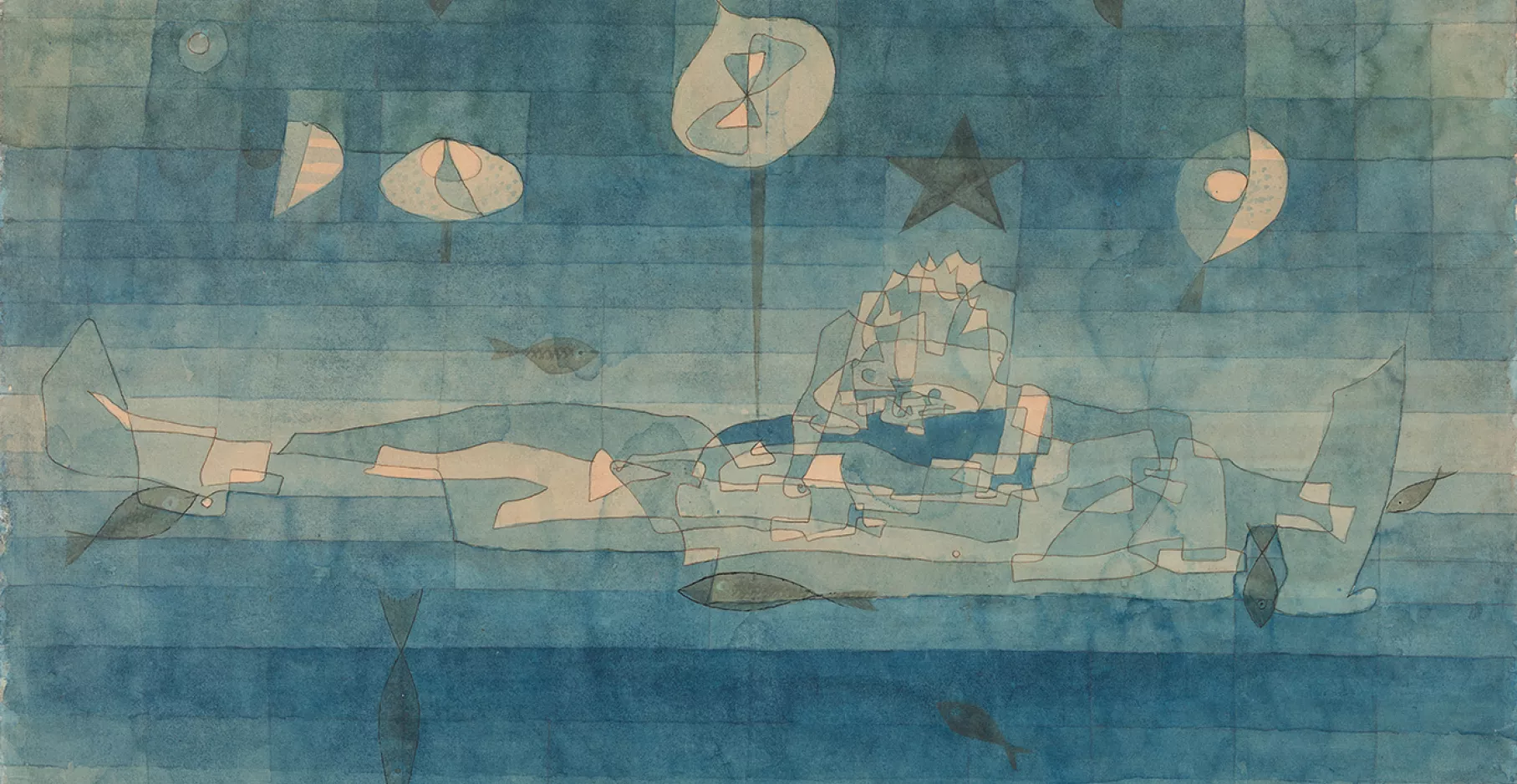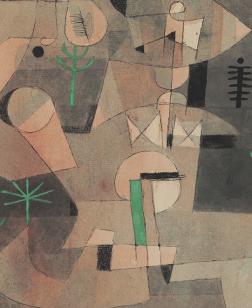Paul Klee, Between two worlds


Paul Klee, Between two worlds
From 19 November 2021
to 27 February 2022


From 19 November 2021
to 27 February 2022
Dates :
19.11. 2021 > 27. 02. 2022
Horaires :
du mardi au dimanche de 10 h à 18 h
Tarifs* :
Tarif plein : 10 €
Tarif réduit** : 7 €
Informations :
+33 (0)3 20 19 68 51
— or —




Klee was born near Berne in 1879 and died in Locarno in 1940. As a young man, it took him a while to decide between painting, writing and music, but he finally went to Munich as a student of visual arts, spent some time in Italy, and visited Paris twice, in 1905 and 1912. Enlivened by several breakaway artistic movements, Munich was to remain his home base up until the War. It was there that he met Wassily Kandinsky and members of Der Blaue Reiter (The Blue Rider), a group of artists who, among other things, were interested in popular art and children’s drawings. A trip to Tunisia in 1914 strengthened his resolve: “Colour and I are one. I am a painter”.
Despite this assertion, which went alongside long years of introspection, Klee, who was plagued by perpetual doubt, always situated himself in an intermediate world, halfway between figuration and abstraction, painting and music, East and West, practice and theory, yesterday and today. Not seeking to reproduce the visible but rather to give form to the invisible, he developed his approach in his journals and in his teaching. In 1920, he joined the staff of the Bauhaus, the school of applied arts founded in Weimar by the architect Walter Gropius. In the years that followed, he came to the notice of the French surrealists, who, in Antonin Artaud’s words, saw him as a “mental painter”. Shortly before his death, his works attracted the attention of Roger Dutilleul and Jean Masurel, who were at the origin of the LaM’s modern art collection.

Like many other avant-garde artists, Klee sought new forms of pictorial expression. In 1902, following his stay in Italy, he came to the realisation that the arts of Antiquity and the Renaissance were not compatible with his artistic goals. In order to escape the dead end of academic canons and be able to createsomething new, he had to identify the” original source” from which (as it was then supposed) all forms of art had sprung: “I would like to be as though new-born, knowing nothing of Europe, absolutely nothing; ignorant of writers and fashions, to be almost primitive”, he noted in his journal.
In a text written in 1912 for an exhibition by Der Blaue Reiter, he came to the defence of “the primitive stammerings of an art such as you are more likely to find in ethnographic museums or at home, in your children’s bedrooms”. He also called to mind the art of “the insane”, which found favour in his eyes and which he took “extremely seriously, a great deal more so than any picture gallery, as these days it’s a matter of reforming art”. Klee called upon multiple sources in order to redefine art as a means of “gathering and passing on what rises from the depths”.

The exhibition’s itinerary highlights the four pathways that Klee chose in order to explore these “depths”: asylum art, children’s drawings, non-Western art and prehistoric art. Without seeking to assign a specific formal source to each work, it opens up a wide spectrum of associations for visitors, leaving them free to draw parallels between one gallery and another and elaborate their own interpretations. Several periods will be broached from the angle of the artist’s search for origins: the context of Der Blaue Reiter in Munich, of Dada in Zurich and of surrealism in Paris, the years of teaching at the Bauhaus, and finally his enthusiastic reception in the United States in the 1930s
Sebastien Delot, Director/Curator, LaM
Fabienne EggelhÖfer, Head Curator, Zentrum Paul Klee, Berne
Jeanne-Bathilde Lacourt, Curator of Modern Art, LaM
The Paul Klee, between two worlds exhibition is co-produced with the Zentrum Paul Klee (Berne). The event is accompanied by a catalogue published by Flammarion in German and French (with texts by Fabienne Eggelhöfer, Osamukuda, Sébastien Delot, Jeanne-Bathilde Lacourt, Savine Faupin, Christophe Boulanger, Maria Stavrinaki and Morad Montazami).
Receive news about the LaM, its collection, exhibitions, events, and more...
Prendre l'autoroute Paris-Gand (A1/A22/N227)
Sortie 5 ou 6 Flers / Château / Musée d’art moderne

Métro ligne 1 - Station Pont de Bois
+ Bus Liane 6, direction Villeneuve d'Ascq Contrescarpe
ou Bus ligne 32, direction Wasquehal Jean-Paul Sartre
Arrêt L.A.M.
Métro ligne 2 - Station Fort de Mons
+ Bus Liane 6, direction Villeneuve d'Ascq Contrescarpe
Arrêt L.A.M.
Métro ligne 2 - Station Jean Jaurès
+ Bus ligne 32, direction Villeneuve d'Ascq Hôtel de Ville
Arrêt L.A.M.
Un parking à vélo vous est proposé à l'entrée du parc du musée
La carte « La MEL à Vélo », édition 2017-2018, vous informe sur les aménagements cyclables, stations V'lille, itinéraires conseillés... Élément indispensable à mettre dans toutes les sacoches, elle réunit l'ensemble des informations dont vous pouvez avez besoin lors de votre trajet en vélo
L'entrée principale du LaM est située en contrebas du parking P8, à proximité immédiate du rond-point situé au bout de l'allée du Musée
Deux parkings publics (non surveillés) sont disponibles pour garer vos véhicules :
- le parking P7 (dit Des moulins, véhicules de + de 1,8 m)
- le parking P8 (hauteur maxi : 1,8 m), à proximité immédiate de l'entrée principale du musée, mais de moindre capacité que le P7
Pour les bus, un dépose-minute est situé sur l'avenue de Canteleu
Les emplacements de parking réservés P.M.R. se situent juste avant le rond-point de l’allée du Musée, face au pavillon d’entrée du LaM